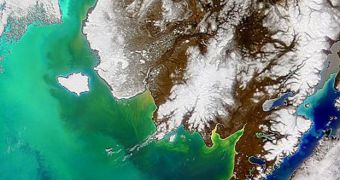Officials at the US National Oceanic and Atmospheric Administration (NOAA) announce that experts investigating the causes and effects of algal bloom influencing coastal Atlantic communities have just been awarded a $1 million grant to continue their work.
Preventing and controlling harmful algal blooms is of paramount important for communities living alongside the Atlantic coastlines, as a numerous things depend on clear water.
The multi-year NOAA research grant is expected to be worth about $2 million, although no clear cost estimates have as of yet been completed.
Scientists at the organization say that this is one of third research initiatives to receive funding under the new Prevention, Control and Mitigation of Harmful Algal Blooms program.
“Great strides have been made toward understanding why blooms occur as well as improvements in predicting their occurrence and in monitoring,” explains John Griffin.
“We are now able to envision situations where we can limit or control blooms, thereby limiting their impacts on human health and Bay resources,” adds the expert, who is the Secretary of the Maryland Department of Natural Resources.
“We are very excited to be part of this initial research, and to work with NOAA and our other partners to help make this vision a reality,” he says.
““Harmful algal blooms pose a real and significant threat to humans, animals and the coastal environment,” argue Russell Callender, who is the acting director of the NOAA National Centers for Coastal Ocean Science( NCCOS).
The Centers are basically the executive arm in charge of fulfilling the responsibilities NOAA has under the Harmful Algal Bloom and Hypoxia Research and Control Act.
“The new PCMHAB program adds an important focus on developing proactive management solutions so that one day we may even be able to stop some blooms before they start,” Callender says.
Protecting fisheries, coastal resources and public health is the main goal of the new research initiative, and NOAA announces that it plans to see the project through no matter the costs.
Algal blooms are dangerous because they prevent sunlight from entering the water and feeding microscopic organisms.
They also remove oxygen from the water, essentially suffocating numerous species of complex animals.

 14 DAY TRIAL //
14 DAY TRIAL //